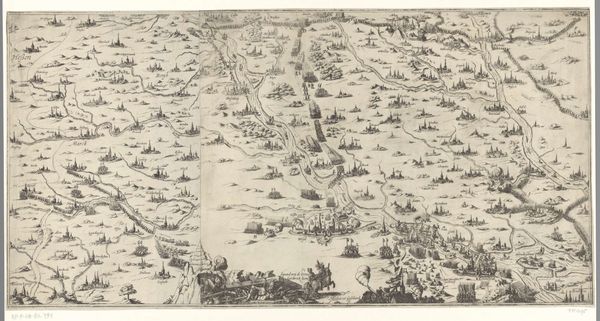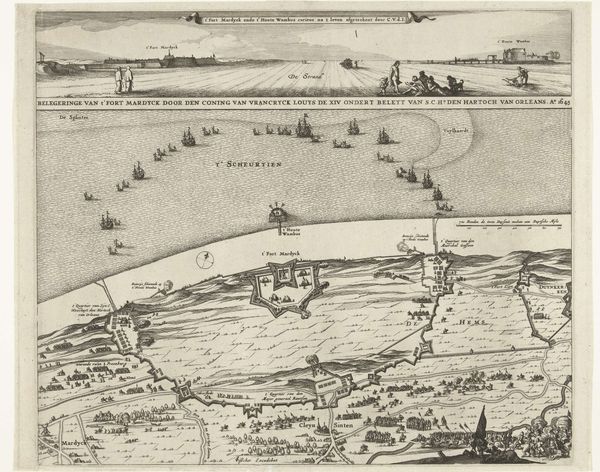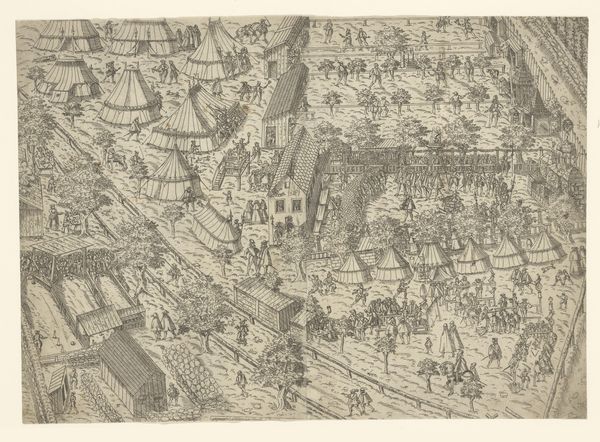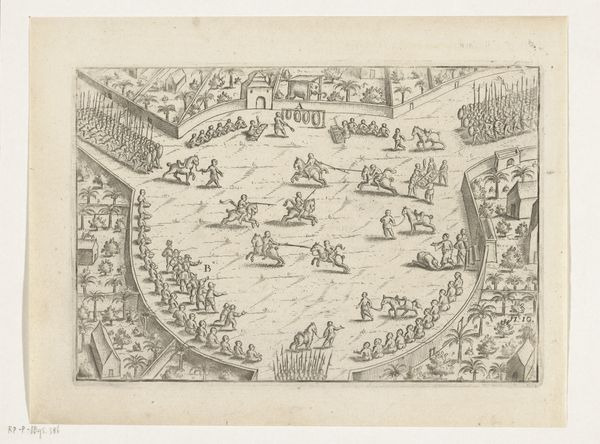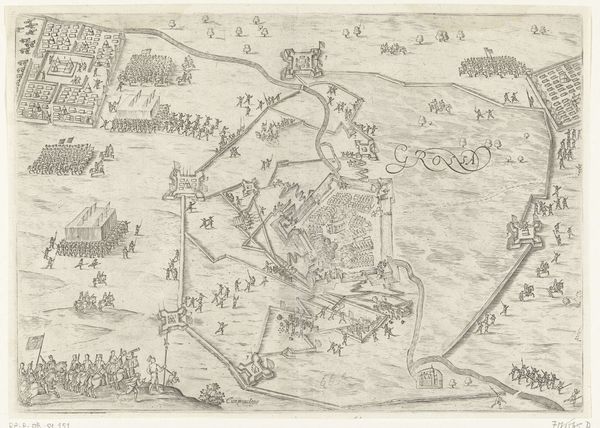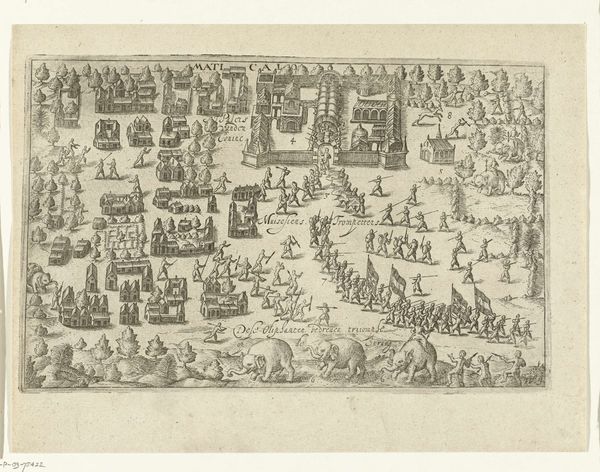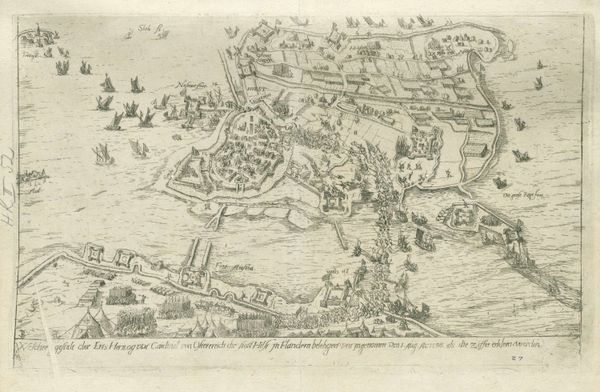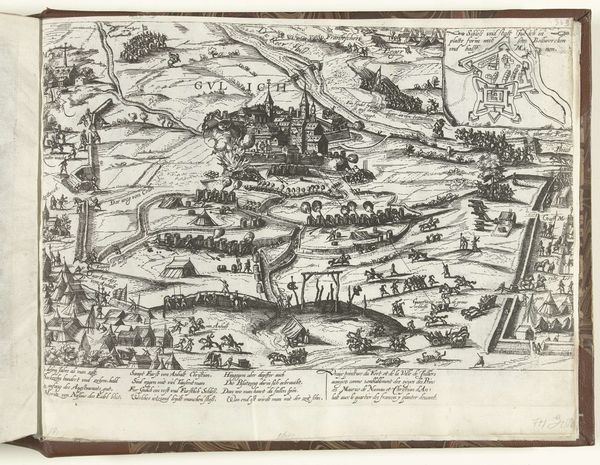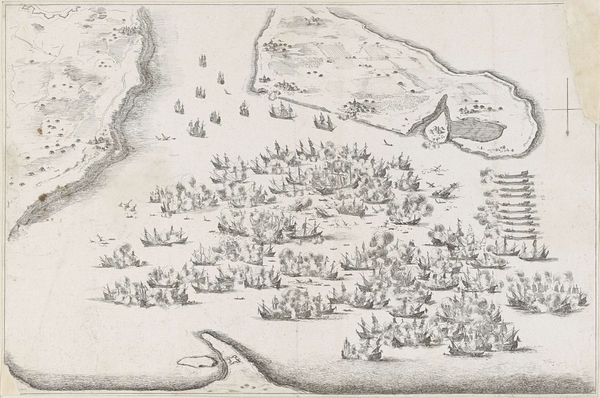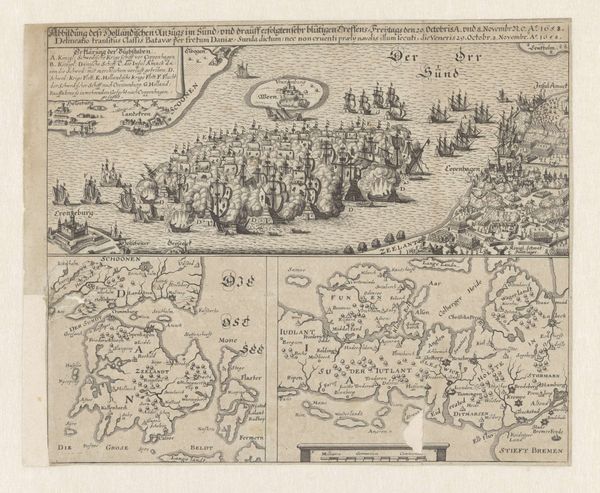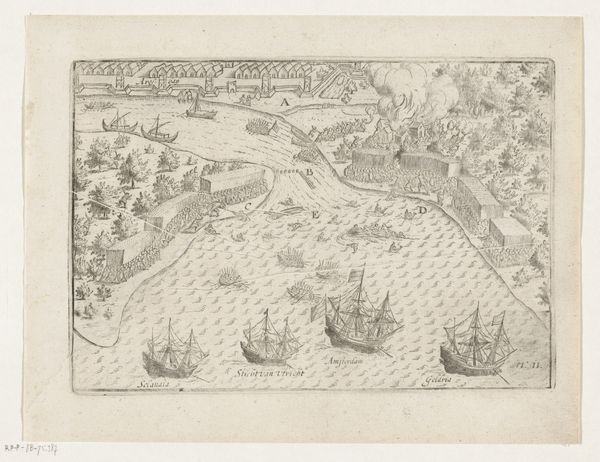
drawing, print, ink
#
drawing
#
ink drawing
#
dutch-golden-age
# print
#
landscape
#
ink
#
geometric
#
history-painting
#
early-renaissance
Dimensions: height 230 mm, width 303 mm
Copyright: Rijks Museum: Open Domain
Curator: Here we have an early 17th-century print, "Kaart van de strijd in het hertogdom Gulik, 1614," currently residing here at the Rijksmuseum, attributed to an anonymous hand. What jumps out at you, Editor? Editor: It looks like the precursor to a modern infographic. But instantly cold, calculated…I feel like an ant, observing a macro-scale conflict from too far away to actually feel. Does that make sense? Curator: Perfectly. It's all about that overview, isn't it? The emphasis is on territory and resources. Note how the ink defines not only borders but also designates key fortified cities – tiny symbols of power, materially and politically. And the rendering of labor involved in war. Editor: Absolutely. The tiny, repetitive movements… look, it’s stylized of course, but those figures, all etched in miniature, enacting destruction. What do we know about this particular struggle? The War of… Curator: The Jülich Succession. Essentially, a dispute over who would inherit these strategic territories in the Holy Roman Empire. Notice the cannons, ships, and arranged military personnel. This was a proxy war in many respects, involving larger European powers jockeying for position, making claim for future holdings of key land Editor: It gives an unnerving detached feel doesn't it, to view conflict rendered so precisely. A battleground quantified almost like some agricultural product. But who do you imagine were its intended consumers, I wonder? The very elites directing from afar, presumably? Curator: Likely so. Though I suspect copies would have circulated amongst a wider literate population too. These images served a vital function as a news source as well. This blend of art, craft and strategic documentation feels uniquely of its time – what value beyond the purely informational do you perceive, if any? Editor: You know, despite the inherent remove – and despite it being commissioned as cold political capital, it retains something artistically naive, a handcrafted human essence. Seeing it laid out like this makes war seem all the more absurdly geometrical and cruel. Which sounds obvious written down – but is really communicated via this specific lens. Curator: A somber observation, fitting to a fraught and formative moment in Dutch and European history. Thank you. Editor: Thank you, this was enlightening. A strange mirror held up to history itself, via lines in ink.
Comments
No comments
Be the first to comment and join the conversation on the ultimate creative platform.
